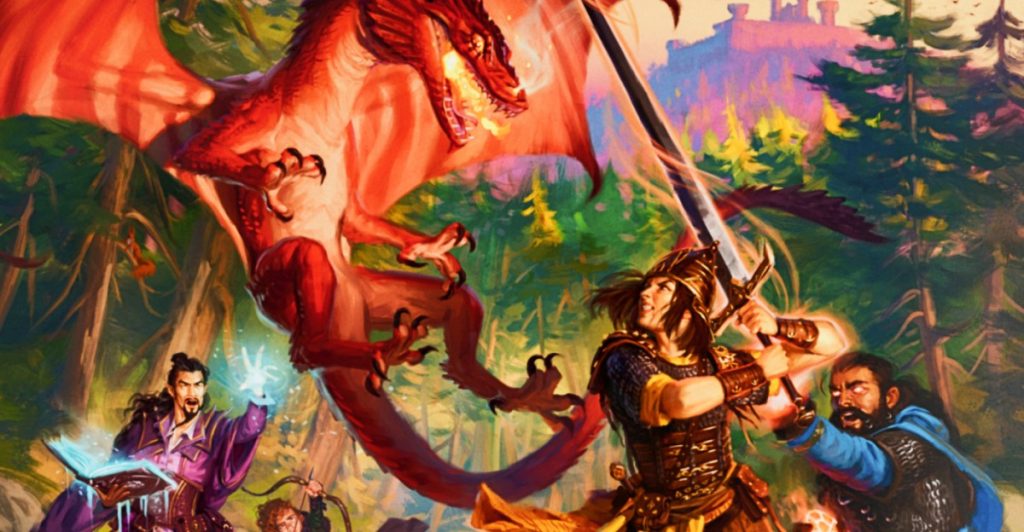The Keep on the Borderlands has cemented its status as one of the most iconic modules in the history of Dungeons & Dragons (D&D). Created by Gary Gygax and published by TSR, this module has captured the imaginations of new players and seasoned dungeon masters alike since its debut in 1979. It serves as an excellent introduction to the core mechanics and spirit of D&D, making it a favorite for generations. The overwhelming popularity of this module has recently given rise to a new starter set for Dungeons & Dragons 5e, titled Heroes of the Borderlands, which aims to bring back the magic of B2 and introduce a new generation to its unique charms. As D&D continues to grow and evolve, the enduring legacy of The Keep on the Borderlands remains a touchstone for the franchise.
Historical Context of the Module
Initially published as B2 in 1979 as part of the Basic Set, The Keep on the Borderlands replaced the earlier module B1, In Search of the Unknown, which encountered legal issues between its creators. When the Moldvay Basic Set emerged in 1981, it featured B2, which went on to sell nearly 1.3 million copies, establishing itself not only as a classic but also as an essential entry point for many new players. This enduring popularity is a testament to its balanced design and accessibility, ensuring that players who entered the realm of D&D during the late ’70s and early ’80s often generated their initial adventures from this module.
Why B2 Stands the Test of Time
Despite being over 46 years old, The Keep on the Borderlands has remained relevant due to its thoughtful design, which allows for adaptive gameplay that encourages creativity on the part of both players and Dungeon Masters (DMs). Unlike many linear modules, B2 features a sandbox-style structure that gives heroes the autonomy to explore various locations surrounding the titular Keep. This distinction is significant; it allows players to engage in dynamic storytelling and foster a sense of exploration that many modern modules strive to achieve but sometimes fall short of delivering. The Keep itself serves as a central hub, replete with the classic components of a fantasy town, such as taverns, shops, a guildhall, and even a chapel.
Just outside the Keep lies the infamous Caves of Chaos—a complex of eleven interconnected caves, each harboring its own challenges and enemies. These dungeons vary in difficulty, providing an excellent balance for players as they choose how boldly they wish to venture. The design encourages a learning curve that feels natural for newcomers while still offering enough depth for seasoned players to appreciate. The decision to allow players to approach any cave at any time is particularly innovative, as it fosters both strategic decision-making and the thrill of risk-taking.
Modern Relevance and Community Impact
While some modern players might view B2 as simplistic by today’s standards, its lack of excessive detail in world-building allows DMs to fill in the gaps with their own lore and narratives. This makes each run of the module a personal experience, tailored to the preferences and creativity of the individuals at the table. According to a recent survey conducted by Statista, around 70% of D&D players enjoy crafting their own campaigns, highlighting a community that thrives on creativity and personal input. This feature of B2 allows it to remain flexible within the current landscape of D&D that encourages player agency.
The Keep stands as an archetype that can be found in nearly every D&D campaign, combining nostalgia with the enthusiasm of new players who are just discovering the game. Modern D&D campaigns, influenced by cultural phenomena like Stranger Things and platforms such as Critical Role, have rekindled interest in tabletop role-playing games, pushing new players toward the fundamentals established by modules like B2. As the game continues to expand, The Keep on the Borderlands serves as a nostalgic touchstone while providing a sturdy foundation for exploration and adventure.
Looking Ahead: The Future of D&D and Heroes of the Borderlands
The upcoming Heroes of the Borderlands aims to cater to a new generation of players, appealing to those who enjoy board games and quick-start experiences. It’s important to note that Dungeons & Dragons has revisited the setting of B2 in various forms over the years, from a sequel for 2nd edition AD&D in 1999 to a re-release for D&D 4e in 2010. This ongoing exploration underscores the module’s significance within the franchise. As The Keep on the Borderlands continues to spark interest, it serves as a bridge connecting a half-century of D&D history, maintaining the magic that can only be created at a D&D table and ensuring that future adventurers will also recognize its enduring charm.

